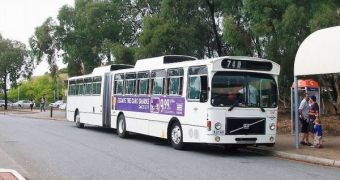As anyone who's ever ridden a bus on a hot summer day can attest to, the experience of being crammed inside a metal can with about a hundred other people under immense heat is not exactly the most pleasant. And let's not mention those who have still failed to grasp the concept of personal hygiene. To address this issue, which is present from New York to Beijing, and from Shanghai to Paris, experts from the Indian Institute of Technology Delhi have recently proposed that a simple redesign of the buses traveling in these areas could take care of the problem once and for all.
The main issue with crowded buses is not necessarily the heat, but the ventilation. Even if all the windows and roof hatches are opened, the air flow rarely penetrates as far as the center aisles, and is not spread evenly throughout the bus. In the developed world, this problem is addressed by installing expensive and gas-guzzling air conditioning systems, which artificially lower the temperatures to an acceptable level for all passengers.
But the Indian research team, led by Sunil Kale, from the Institute's Department of Mechanical Engineering, believes that these expenses could be removed from budget plans if a simple redesign of the bus' exterior was performed. Kale says that a large vent placed at the front of the bus, and another one at the end could draw air at a far more efficient rate than side windows and roof openings ever could. Additionally, the situations in which passengers sitting next to the windows get a headache on account of the current are also averted.
“In a long-term policy perspective of sustainable transport, buses form an important mode of transport that needs to be strengthened. Besides improving fuel economy, passenger comfort is a major issue with such buses especially in tropical climates,” the experts argue. In a paper entitled “Aerodynamics of a bus with open windows,” published in the latest issue of the International Journal of Heavy Vehicle Systems, the team says that the tests were conducted with a 1:25 model inside an air tunnel, which ensured that the measurements were scientifically valid.

 14 DAY TRIAL //
14 DAY TRIAL //